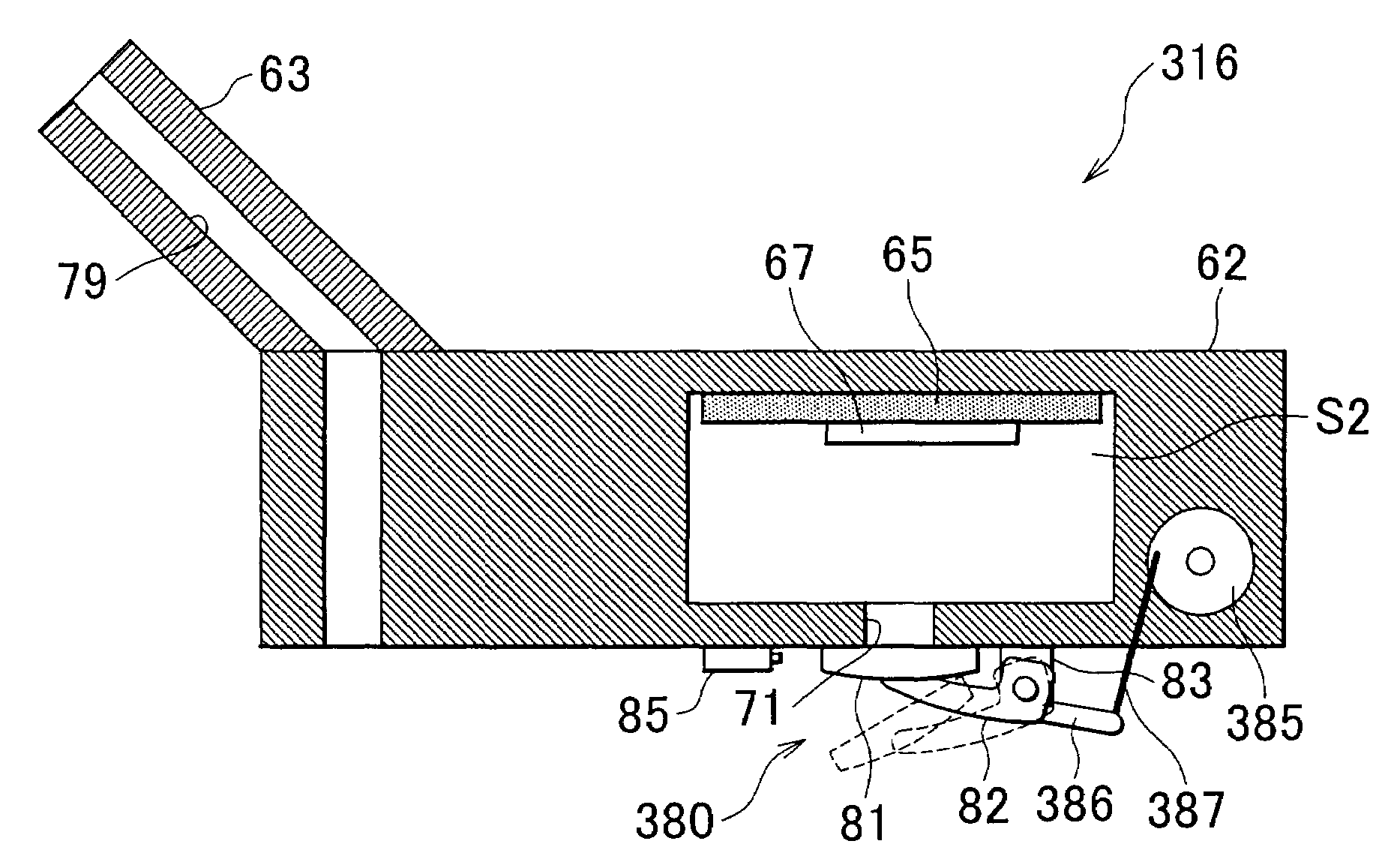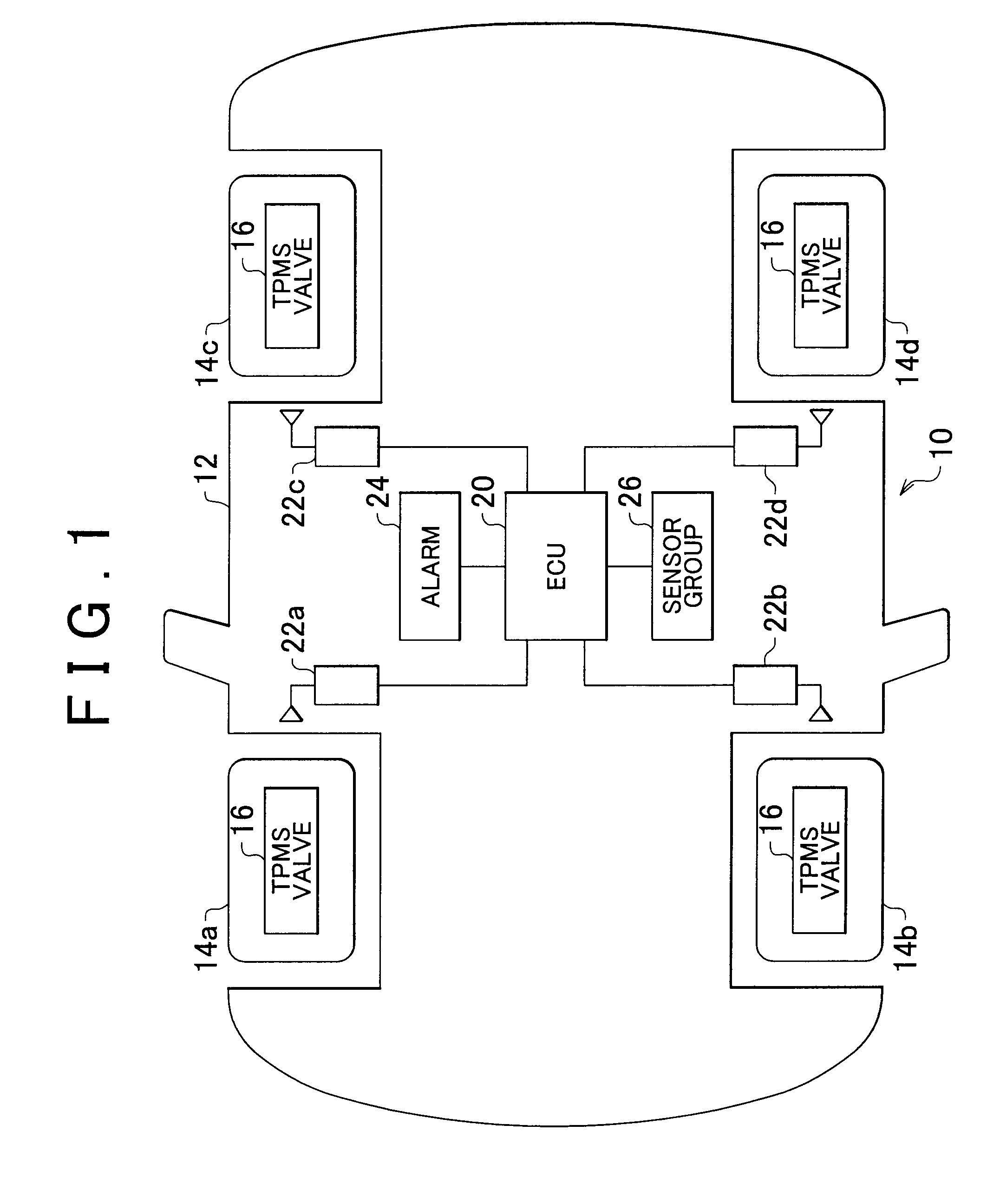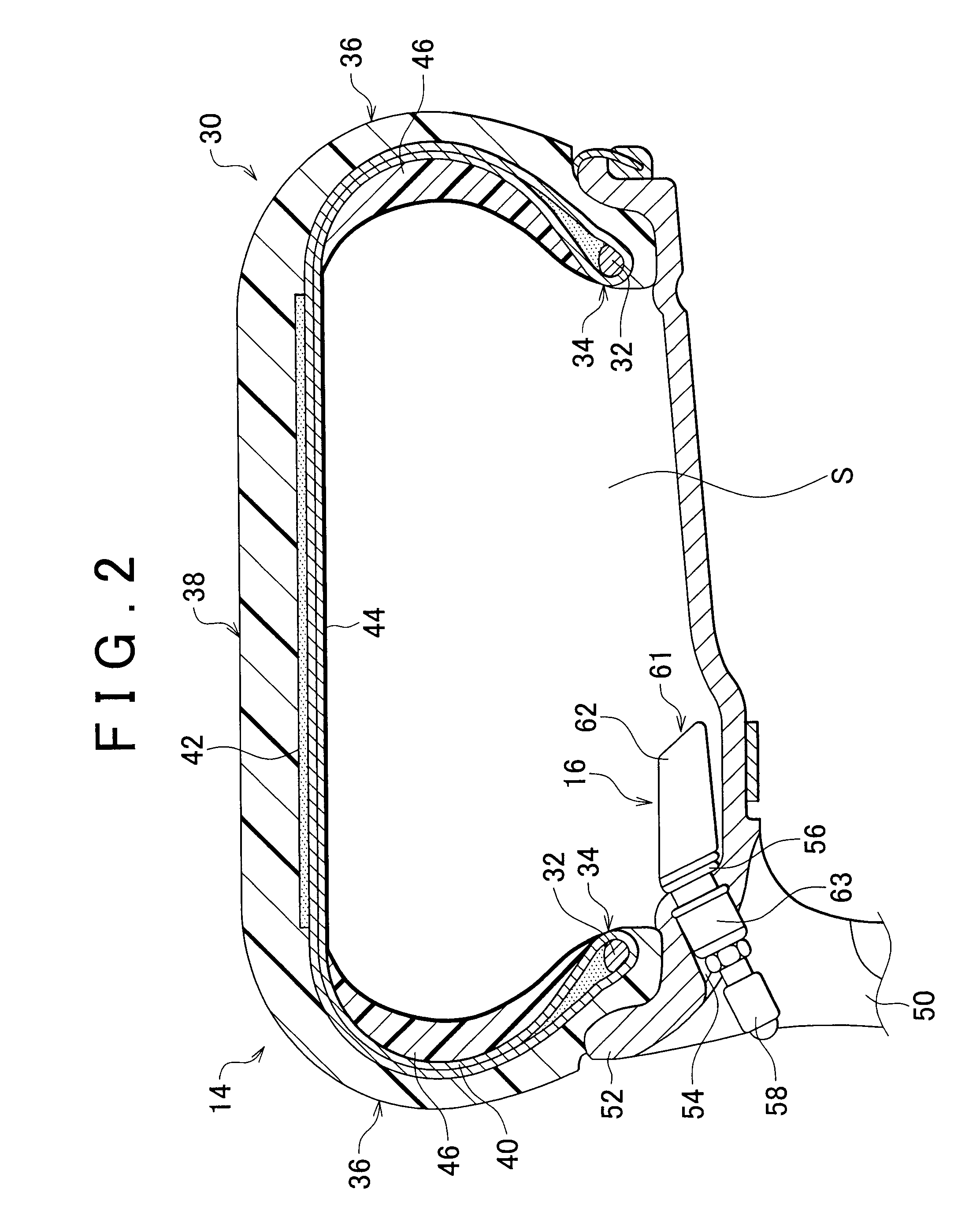Wheel condition detector and wheel condition monitor
a condition detector and monitor technology, applied in vehicle tyre testing, instruments, roads, etc., can solve the problems of restricting the entry of foreign matter, affecting the desired detection performance of the condition sensor, etc., and achieves the effect of minimizing adverse effects on detection and high viscosity
- Summary
- Abstract
- Description
- Claims
- Application Information
AI Technical Summary
Benefits of technology
Problems solved by technology
Method used
Image
Examples
first embodiment
[0048]FIG. 1 is a schematic diagram of a vehicle having a wheel condition monitor according to the invention. FIG. 2 is a partial sectional view of a wheel mounted on the vehicle of FIG. 1. As shown in FIG. 1, a vehicle 10 has four wheels rotatably supported on a vehicle body 12. They include a right front wheel 14a, a left front wheel 14b, a right rear wheel 14c, and a left rear wheel 14d (hereinafter sometimes collectively called as “wheel 14”). Various units are mounted on the vehicle body 12, such as engine, transmission, steering system, brake system (they are not shown), and electronic control unit (hereinafter referred to as “ECU”). The engine is a driving source for driving wheels. The transmission is designed to transmit a driving force at a given gear ratio. The steering system is designed to steer the wheels. The brake system is designed to apply a braking force to the wheels. The ECU is designed to control these units.
[0049]The wheel 14, including a tire and a wheel memb...
second embodiment
[0073]FIG. 7 is a schematic side sectional view of a TPMS valve according to the invention. In a TPMS valve 216, an opening-closing mechanism 280 includes an opening-closing member 281 and a spring 282. The opening-closing member 281 has a communication passage 271 therein. The spring 282 is an elastic member that impels the opening-closing member 281 in the closing direction.
[0074]The opening-closing member 281 has a base section 283 and a communication hole forming section 284. The base section 283 moves along inner walls of the detection space S2 towards or away from the air pressure sensor 67. The communication hole forming section 284 has a cylindrical shape that extends from the center of the base section 283 in a direction opposite from the air pressure sensor 67. A guide hole 285 is formed in the case 62. A distal end of the communication hole forming section 284 is inserted slidably through the guide hole 285. A communication passage 271 runs through the communication hole ...
third embodiment
[0082]In another case the acceleration sensor 68 detects zero acceleration, that is, the wheel 14 stops rotating. After a predetermined period of time has elapsed since the detection of the rotation stop, the control circuit 76 drives the actuator 385 to actuate the lid 81 to the open position. More specifically, when the vehicle 10 starts moving after the injection of tire repair agent and then stops, the tire repair agent is displaced over time to the bottom surface of the tire 30 due to the gravity. Thus, the displaced tire repair agent, does not enter the case 62 through the communication hole 71. This brings the communication hole 71 into communication mode, and therefore enables detection of the conditions of the wheel 14 during the stop of the vehicle 10. In the invention, the acceleration sensor 68 may be considered as a stop state detecting section.
[0083]As discussed above, in the third embodiment of the invention, the opening-closing mechanism 380 is also provided for open...
PUM
 Login to View More
Login to View More Abstract
Description
Claims
Application Information
 Login to View More
Login to View More - R&D
- Intellectual Property
- Life Sciences
- Materials
- Tech Scout
- Unparalleled Data Quality
- Higher Quality Content
- 60% Fewer Hallucinations
Browse by: Latest US Patents, China's latest patents, Technical Efficacy Thesaurus, Application Domain, Technology Topic, Popular Technical Reports.
© 2025 PatSnap. All rights reserved.Legal|Privacy policy|Modern Slavery Act Transparency Statement|Sitemap|About US| Contact US: help@patsnap.com



